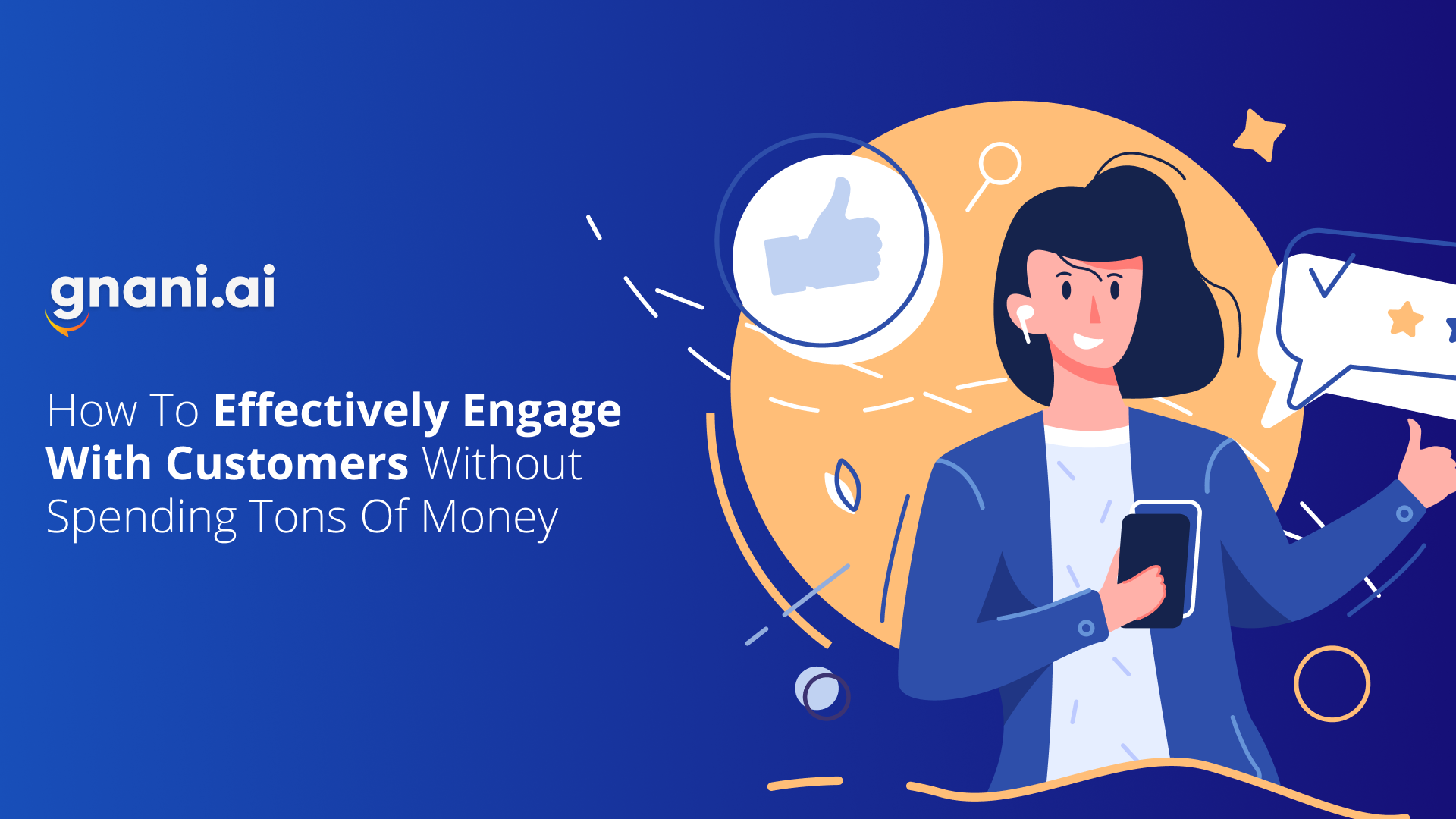The modern consumer is highly empowered and expects businesses to provide a great customer experience. They are used to the instant gratification of the internet, with 52% of customers expecting personalized engagement. Considering all the digital channels available, a business has many ways to engage customers, and most brands are exploring omnichannel presence.
With the advent of AI, communication methods can go beyond traditional calls and emails. Conversational AI can provide more engagement without resource exhaustion as voice bots can be set to 24/7 availability. Estimates project that over 40% of interactions will be automated through AI and ML by 2023, and as technology evolves further, brands that are not early adopters may miss out.
Why Customer Engagement Matters
Customer engagement is an area where many companies wish to ramp up their efforts. Presently, about 39% of companies report not taking regular feedback from customers, which is one of the foremost ways of engaging them. 54% of customers want the brands to change the ways of engagement. Most surveyed customers said that they would like omnichannel engagement.
There are many reasons to be more regular in ensuring a boost to customer engagement. Today the customer journey is long, and there are more touchpoints where the interaction should be seamless. This means that there are more ways to impress customers but also more ways to miss the mark.
CX is one of the core areas where investment directly translates into meeting business goals faster with 1.5 times higher year-on-year growth due to customer retention, CLV, and repeat purchase rates. As projected by surveys, a consistently good customer journey can make over 65% of people engage with brands long-term. Retaining them, cross-selling, and upselling can be as important as acquiring new audiences.
How to Engage Customers Better: Some Examples

Designing an engaging customer journey encompasses the pre-sales and post-sales stages. The former is more the job of a marketing department though the omnichannel approach needed nowadays requires the customer support teams to be aware of marketing and sales efforts. Most brands are careful enough at this stage.
The latter stage of selling and after-sales engagement is where many brands can pick up the slack. An excellent example is the biggest e-commerce brand, Amazon. Considering that 6 in 10 consumers prefer self-service options to resolve simple problems, Amazon provides regularly updated delivery tracking services. This not only dispenses with repetitive buyer queries but also saves the cost of employing agents for the same.
Amazon’s Alexa is a case in point for using conversational AI to boost engagement besides being a product in itself. As a voice assistant, it does everything, including place orders and connects people to executives for high-level tickets.
Other interesting brands that have made conversational AI a core feature include mental health apps Woebot and Wysa. They are designed to be a point of contact for users, converse at any time and use the customer data to suggest activities and approaches based on the therapeutic technique. Many lifestyle apps use chatbots to figure out the right action for users to take next.
Conversational AI in Customer Engagement: Benefits
Incorporating conversational AI tools like voicebots, voice biometrics, etc., not only helps reduce customer engagement costs and frees up manpower but also broadens the scope of relationship building. Thus, human agents can be directed to solve more complex challenges.
Voicebots have many applications. They can answer simple, repetitive queries that drain human agents and waste their time while making it easy to record data providing insights on customer sentiment and more. They can integrate with omnichannel analytics suites. A brand can use FAQ bots as natural conversations are quicker.
A crucial aspect of Conversational AI bots is cost-effectiveness. On average, an ideal company allocates 65% of the sales and marketing budget to acquire new customers and 20% for customer retention activity. Conversational AI can reduce the operation cost by up to 50% and help companies reach 3X more customers.
Conversational AI can boost customer curiosity when used to design marketing and sales campaigns. Customers share that they feel valued when relevant product intimations and feedback requests target them. Even customer onboarding can be automated.
Therefore, it is high time for your brand to explore the advantages of voicebots in building a better customer engagement plan and empowering your customer support staff.


